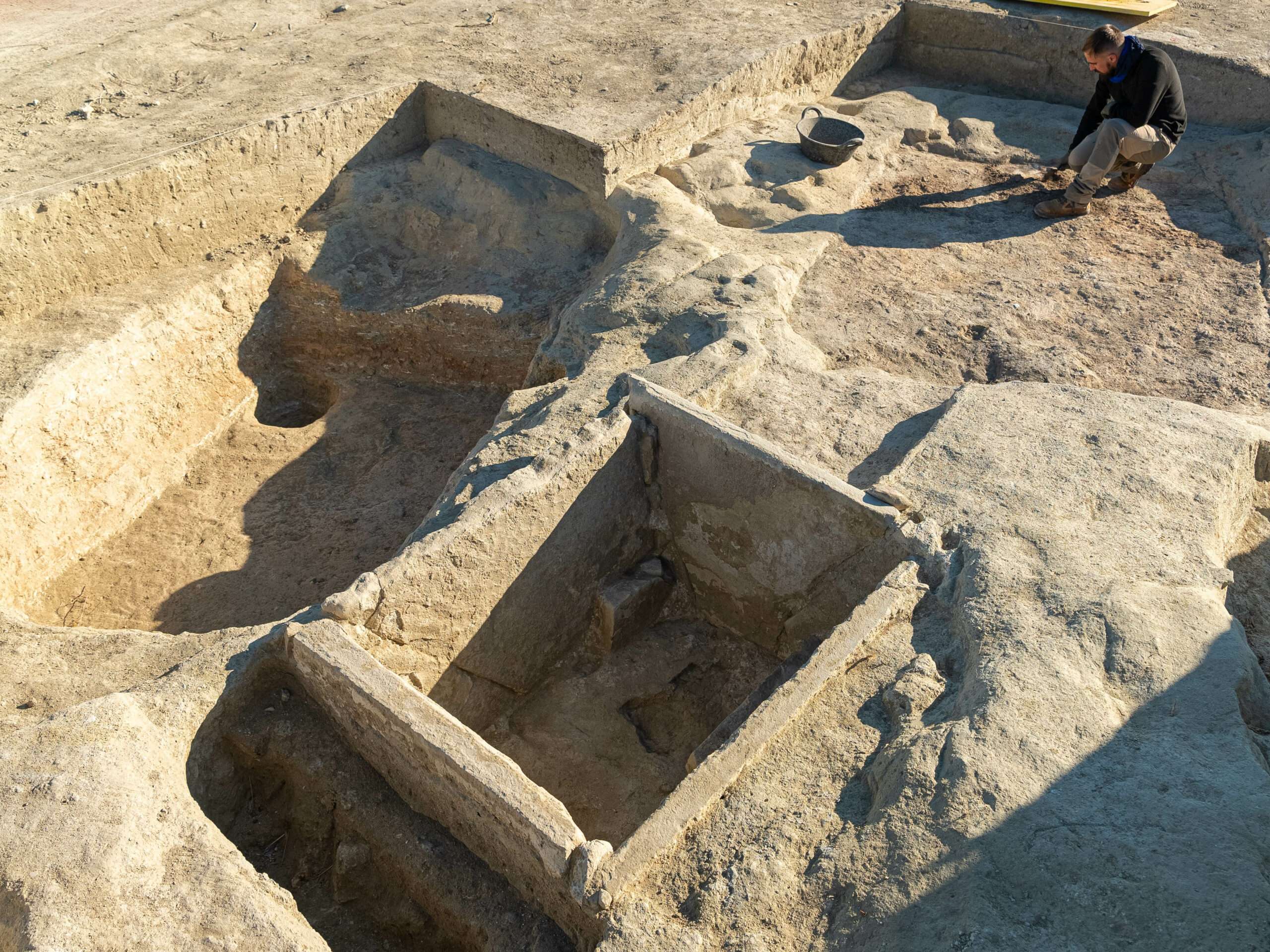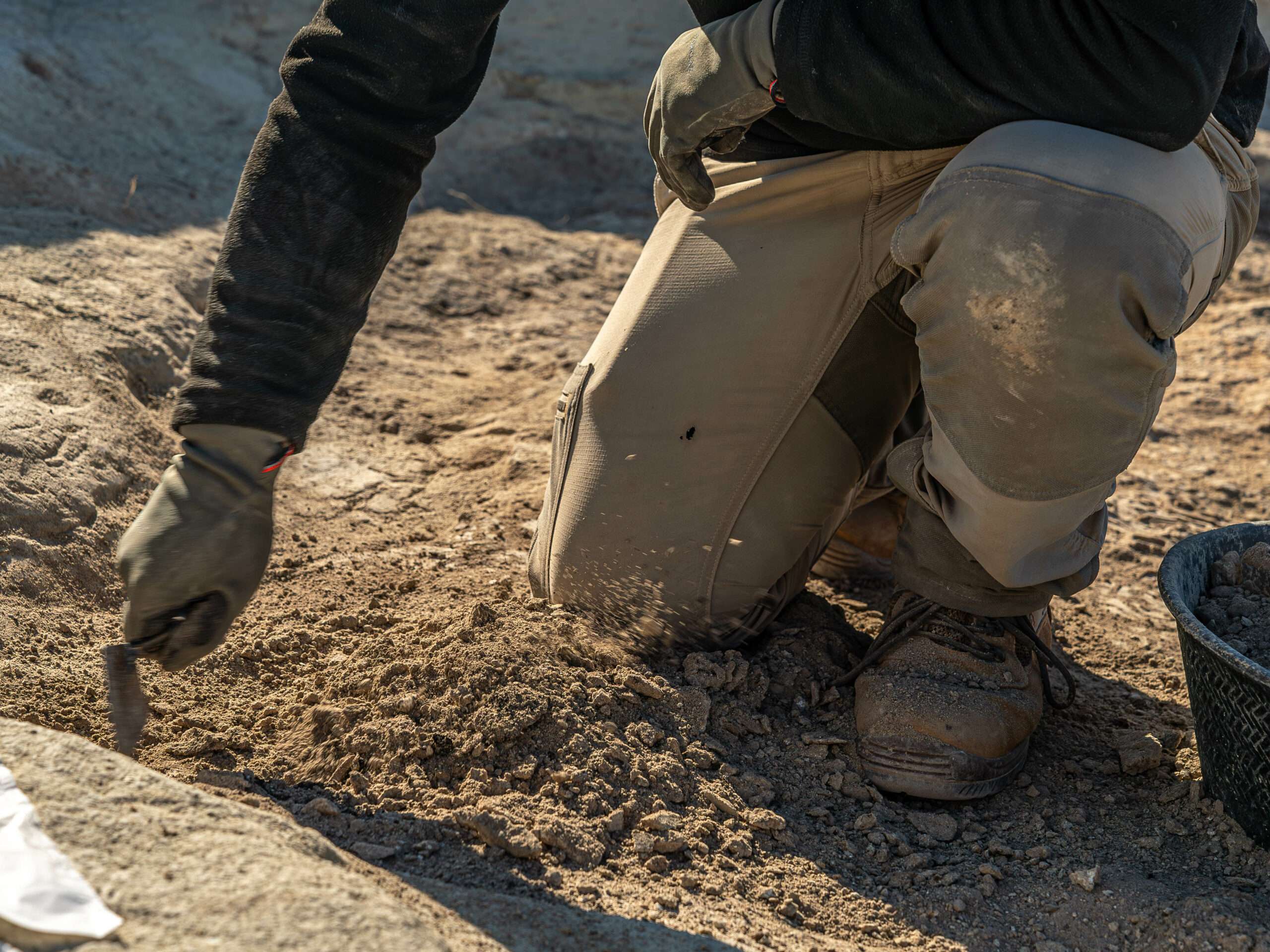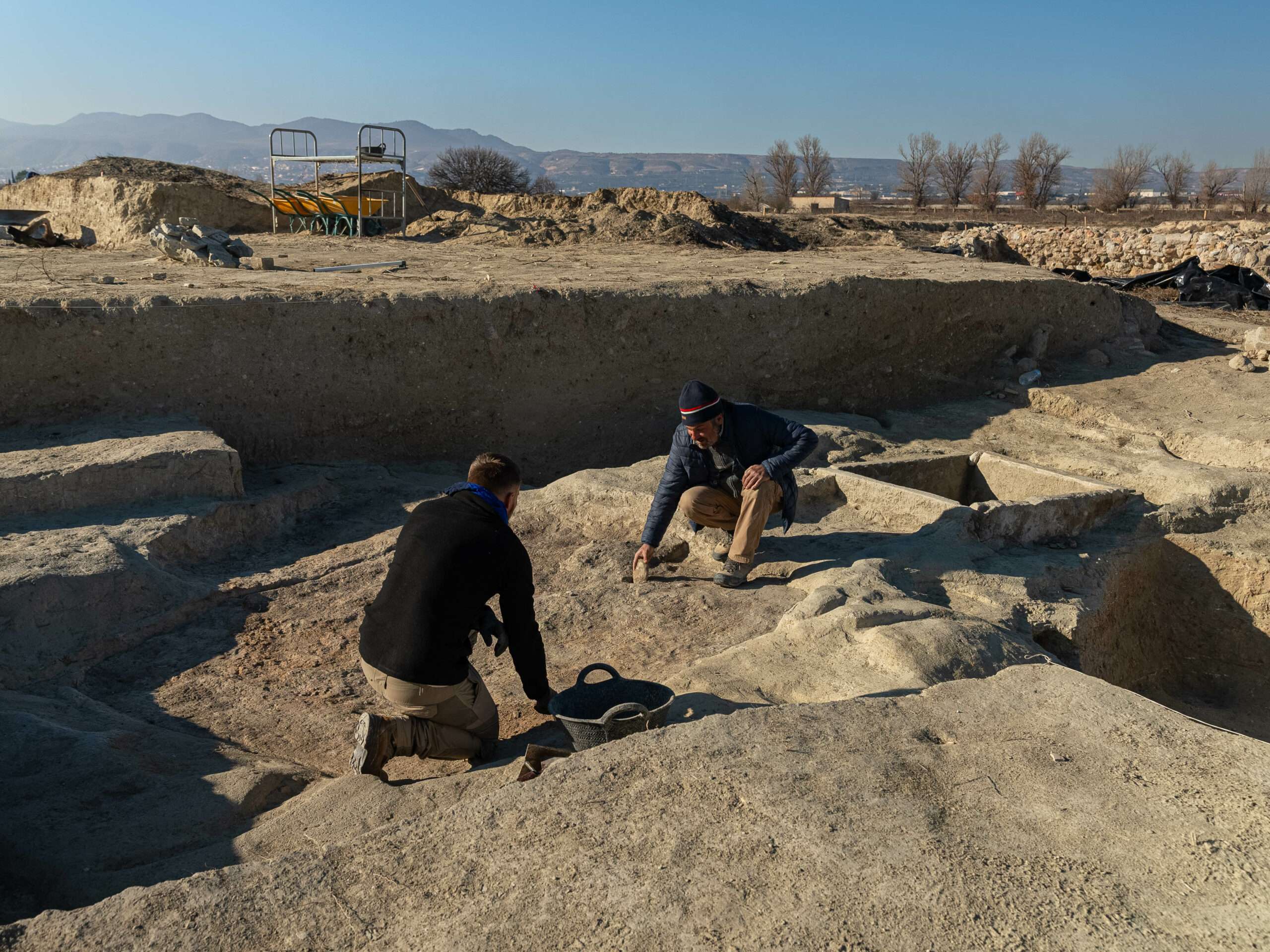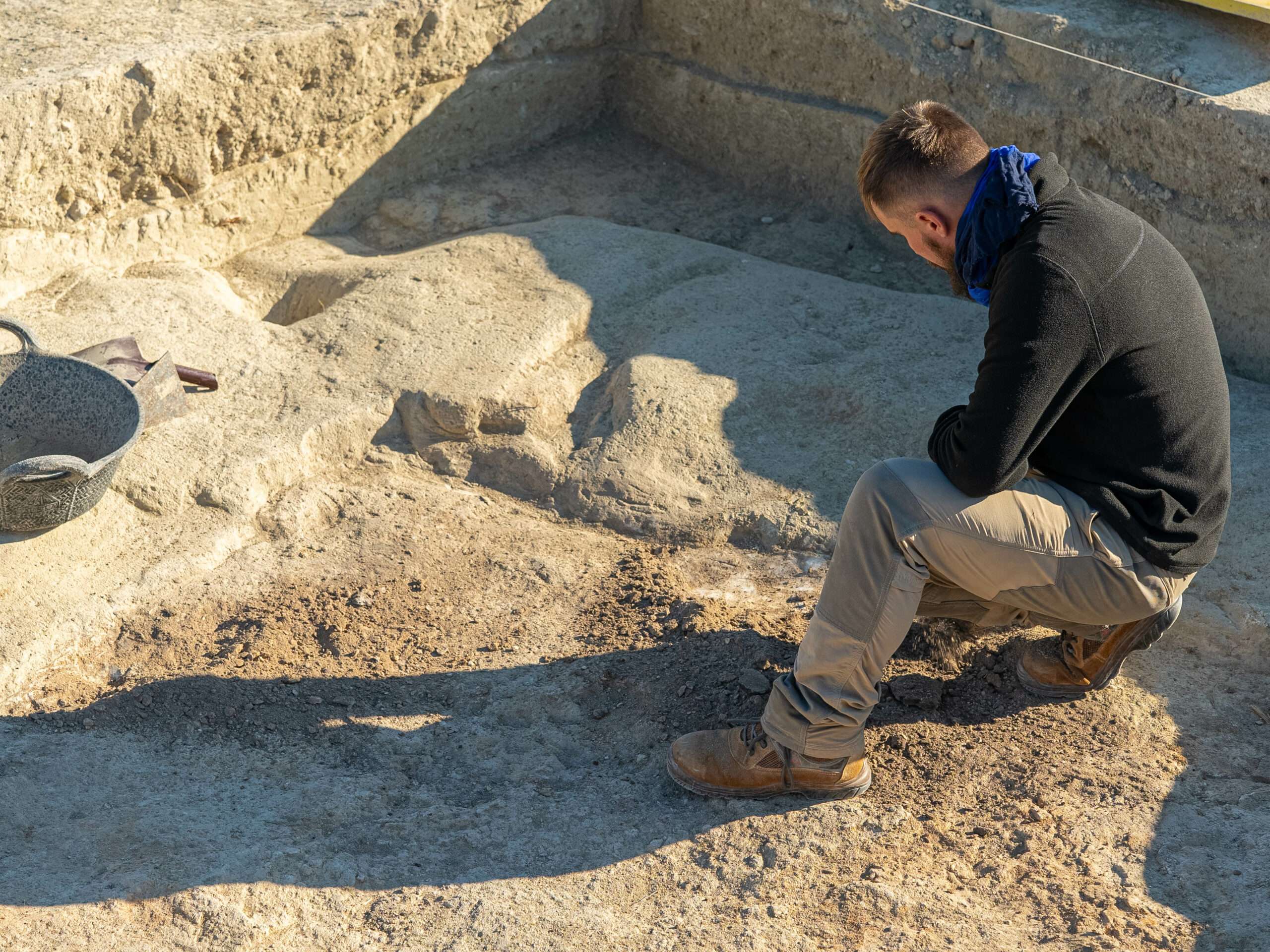TOMB 43
What was tomb 43?
This tomb was excavated in the 1969 campaign and the monograph of the site presents a long description and abundant graphic documentation.
On tomb 43 itself, “At a completely superficial level four slabs of jabaluna stone were documented, but relatively well squared, although broken by the work of the passage of the plows in their continuous removal of the soil.”, and “below them.” There were two urns and a fragment of pottery.
Tomb 43 itself appeared below with “three large broken and thin stone slabs” and one of the covering slabs had detached and fallen into the tomb, possibly at the time when the tomb was still empty of earth. , because when it hit the bottom it had broken part of the ceramic deposited there.
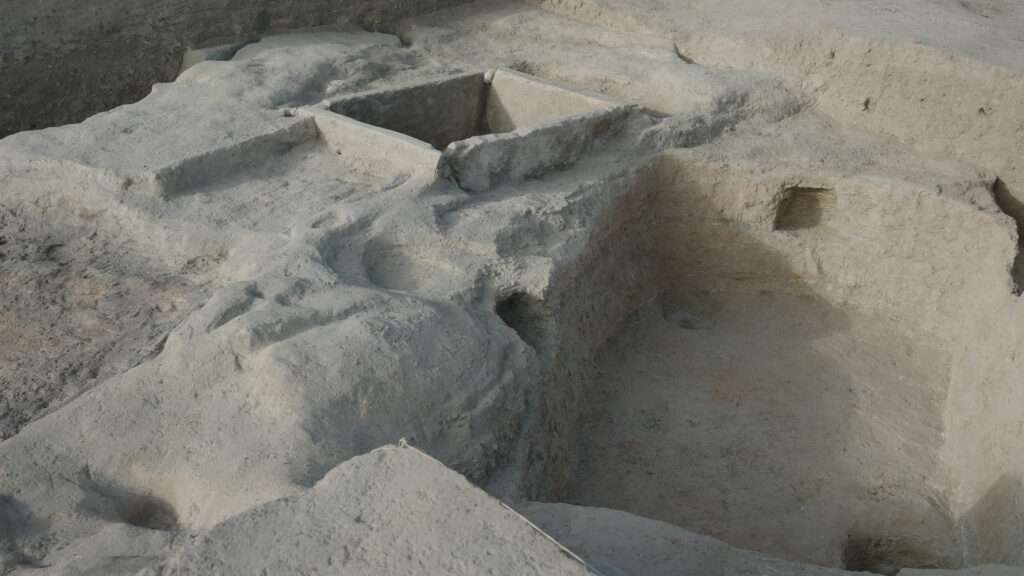
In the archaeological intervention, it has been confirmed that it is a rectangular cist, formed by four jabaluna slabs, which frame a space of 1.41 by 1.14 m. The chamber has a solid bench inside and had a side shelf. Its insertion pit into the geological substrate presents a difference between the southwest and northwest sides and the southeast and northeast sides. In the former, the foundation pit is much wider, 30 and 45 cm respectively, than in the latter, where the pit adapts perfectly to the rectangular shape of the cist.
The structure of this burial is a cist formed by vertical slabs and three more covering ones, one of which was fallen as we have already indicated. The floor retains some remains of the original plaster.
Did you know...?
When the tomb was re-excavated, it was discovered that the burial was triple, that is, we found three cremations with the ashes deposited in three Greek kraters that at the time of the excavation were in their corresponding original places: two on the southern wall and the third deposited at the bottom of the tomb also towards this side.
– Necropolis: Large cemetery in which funeral monuments abound.
– Cratera: In ancient Greece and Rome, a wide vessel for mixing water and wine.
– Soliferreum: Throwing weapon, javelin type, entirely made of iron.
– Falcata: Curved-edged sword originating from pre-Roman Iberia. Its use is historically associated with the populations of the southeast of the Iberian Peninsula.
– Ustrinum: Pit where combustion activity has been found.
– Funeral pyre: It is a structure, generally made of wood, that is used for the burning of a body as part of a funerary rite.
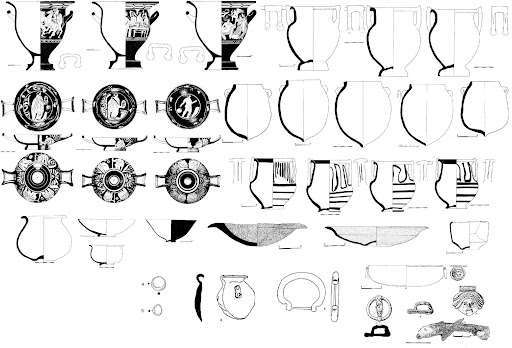
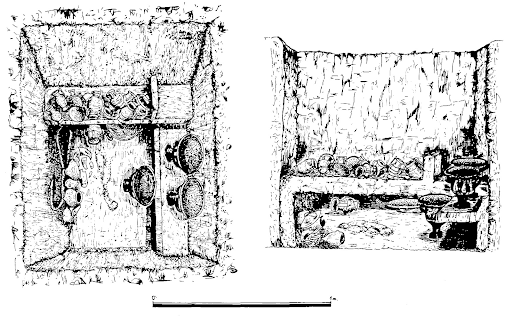



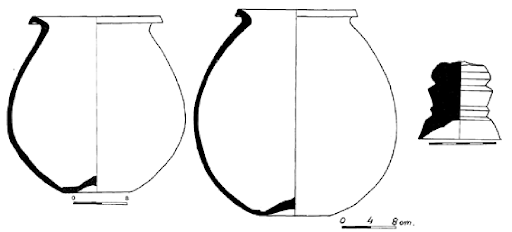
IMMERSION INTO HISTORY
Although it was “full of earth from the leaks it received, once it was left open by the fall of the largest stone, which was pressed against the N wall.”
The structure of this burial is a cist formed by vertical slabs and three more covering ones, one of which was fallen as we have already indicated.
The ground was formed by the rocky surface of the hill, carefully smoothed. The vertical slabs had an average thickness of 7 cm. The size of the tomb, rectangular and noticeably regular, measures 1.45 x 1.13 m. long and wide, respectively, and 1.10 m. deep.
The interior of the chamber is floored with a layer of plaster, arranged on the geological level, which is in a very poor state of conservation, although remains of red pigmentation have been recognized in the northwest corner.
In three of the corners of the interior there are remains of plaster resting on the stone walls, which could well be a sign that the walls were plastered with a layer of plaster. Two not very powerful pits can be seen in the ground, probably a consequence of the 1969 excavation.
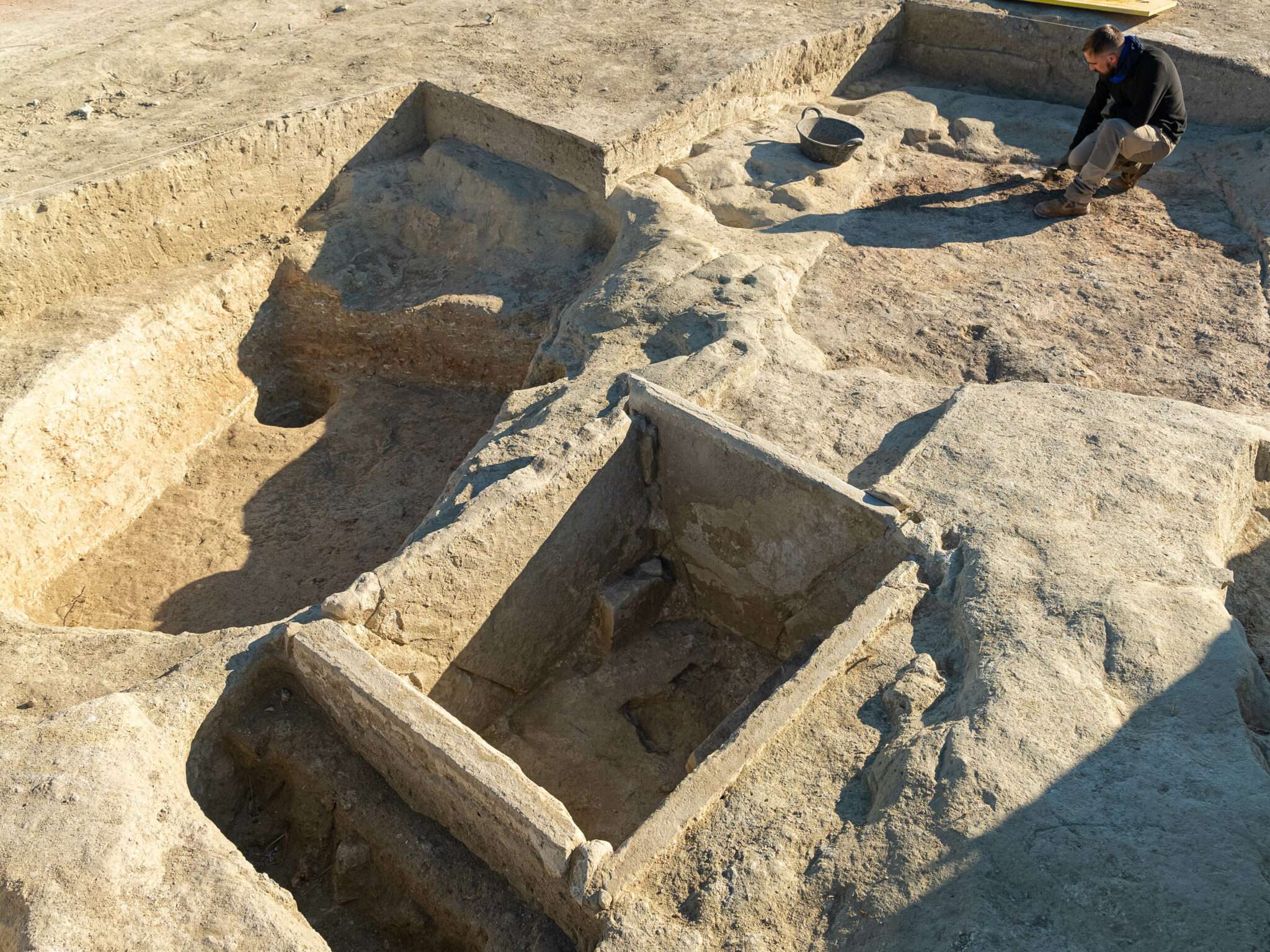
Tomb 106. Large chamber
ES 203. Ustrinum that breaks the entrance corridor to tomb 43.
Tomb 43. Medium chamber formed by stone slabs.
Finally, “Immediately on the E edge of the tomb we are dealing with, an ustrinum was found outside of it, with a possible relationship with this burial. The interior of the chamber is floored with a layer of plaster, arranged on the geological level, which is in a very poor state of conservation, although remains of red pigmentation have been recognized in the northwest corner.
GALLERY
